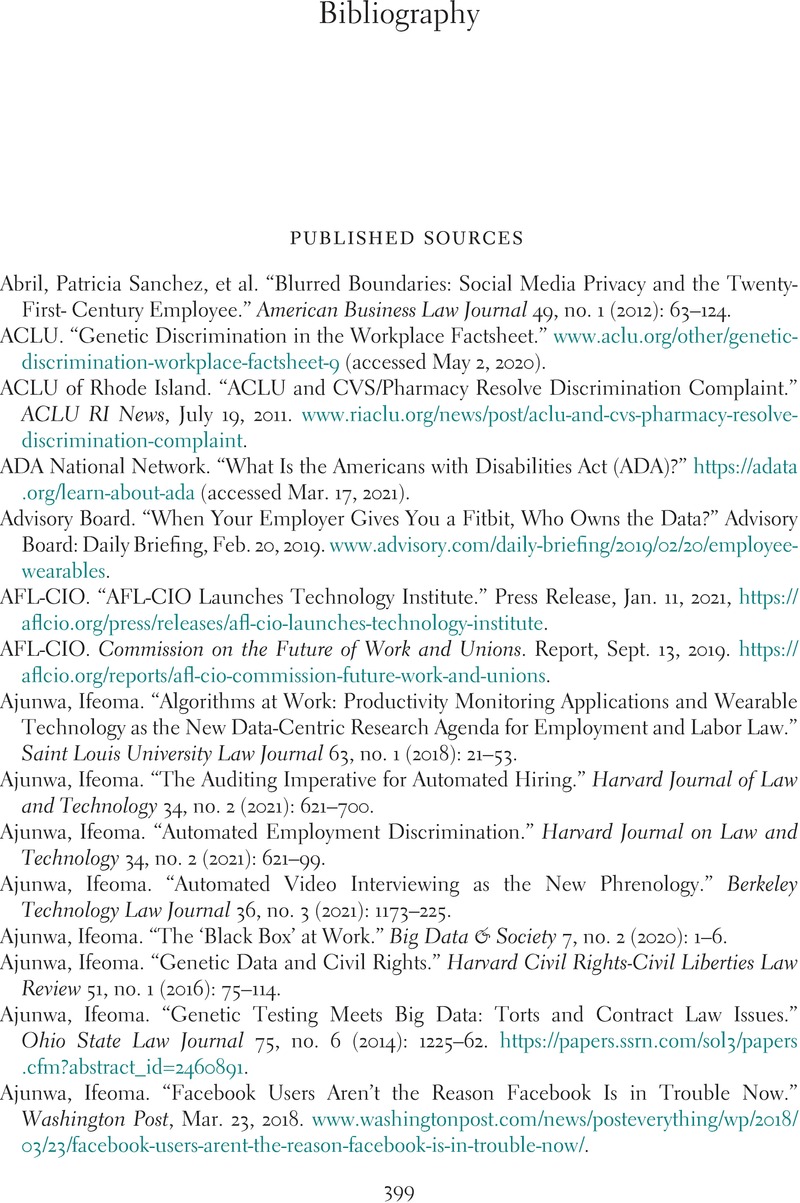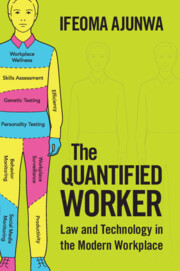Book contents
- The Quantified Worker
- The Quantified Worker
- Copyright page
- Dedication
- Contents
- Figures
- Acknowledgments
- Introduction
- Part I The Ideology of Worker Quantification
- Part II The Mechanical Managers
- Part III Quantified Discrimination
- Part IV Business Ethics and New Legal Frameworks
- Bibliography
- Index
- References
Bibliography
Published online by Cambridge University Press: 27 April 2023
- The Quantified Worker
- The Quantified Worker
- Copyright page
- Dedication
- Contents
- Figures
- Acknowledgments
- Introduction
- Part I The Ideology of Worker Quantification
- Part II The Mechanical Managers
- Part III Quantified Discrimination
- Part IV Business Ethics and New Legal Frameworks
- Bibliography
- Index
- References
Summary

- Type
- Chapter
- Information
- The Quantified WorkerLaw and Technology in the Modern Workplace, pp. 399 - 444Publisher: Cambridge University PressPrint publication year: 2023



